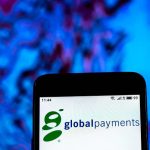The global financial landscape is undergoing a seismic shift, and Saudi Arabia’s King Abdullah Financial District (KAFD) is emerging as a bold counterpoint to traditional hubs like Wall Street or Canary Wharf. Born in 2008 and later absorbed by the Public Investment Fund (PIF) in 2018, this 1.6 million-square-meter megaproject isn’t just about glass towers—it’s a calculated bet to pry open Saudi Arabia’s oil-clenched economy. With 95 architecturally audacious buildings and partnerships humming from HSBC to Bain & Company, KAFD is either the next Dubai—or the most extravagant mirage in the desert. Let’s dissect the hype.
The Blueprint: More Than a Financial ZIP Code
KAFD’s playbook reads like a sovereign wealth fund’s fever dream. Its “Wadi” zone—a curated sprawl of pop-up retail and open spaces—smacks of urban planners trying to bottle Manhattan’s High Line with Riyadh’s austerity. The district’s 50,000-resident capacity and entertainment complex (slated to raise $700 million in equity) suggest ambitions beyond finance: a synthetic city where bankers, tourists, and Instagram influencers collide. But here’s the rub: Can a district designed by 25 star architects (and nearly triple the size of Canary Wharf) *manufacture* organic economic vibrancy? Or is this another “build it and they’ll come” gamble, like China’s ghost cities? Servcorp’s flexible offices and HSBC’s expansion signal corporate buy-in, but the real test lies in whether KAFD can lure talent away from established hubs.
Greenwashing or Genuine Sustainability?
KAFD’s eco-friendly branding aligns neatly with Vision 2030’s sustainability rhetoric—yet skeptics might note the irony of a petrostate preaching carbon consciousness. The district’s LEED-certified towers and walkable zones are commendable, but let’s contextualize: Saudi Arabia remains the world’s top oil exporter. KAFD’s environmentalism feels less like a paradigm shift and more like a PR fig leaf, akin to Dubai’s solar-powered skyscrapers overshadowed by gas-guzzling supercars. That said, if the project *does* catalyze Riyadh’s transition to a post-oil service economy (with digital payment and telecom MoUs inked at the PIF Forum), it could become a case study in forced diversification.
The Investor Mirage: Equity or Mirage?
PIF’s deep pockets back KAFD, but private sector participation remains the litmus test. The $700 million equity push for entertainment facilities reeks of Vegas-style spectacle—a bid to mask financial infrastructure with cinemas and rooftop bars. Compare this to Singapore’s Marina Bay, where finance and leisure fused organically over decades, not by fiat. Bain & Company’s regional HQ commitment hints at long-term faith, but KAFD’s success hinges on whether it can become a *default* destination, not just a subsidized one. The risk? A glut of half-empty towers, like Istanbul’s unfinished financial district, propped up by state capital.
—
KAFD is either a masterstroke or a mirage—a $700 million wager that Saudi Arabia can *buy* its way into the global financial elite. Its scale dazzles, its partnerships impress, but true success lies beyond ribbon cuttings. If Riyadh’s talent pool and regulatory flexibility can match its architectural ambition, KAFD might just dethrone regional rivals. If not? It’ll be the world’s most luxurious ghost town, a cautionary tale of top-down economic alchemy. Either way, the desert’s newest skyline is a spectacle worth watching. *Boom.* Maybe save those investor brochures as coffee-table art.







